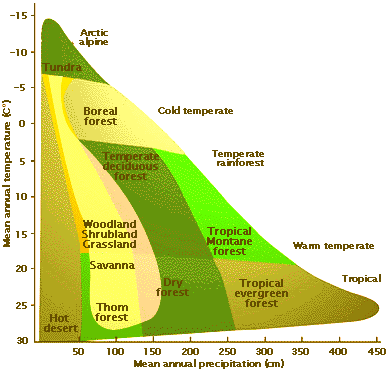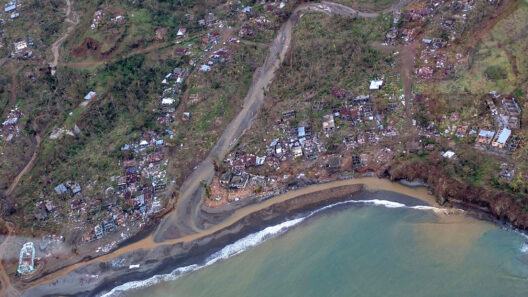The climate of the Southwest is a tapestry woven from the threads of stark desert dryness and invigorating mountain coolness. Much like an artist employing contrasting hues to create depth and intrigue, the Southwest juxtaposes arid landforms with lush highland terrains, resulting in varied climatic experiences that render this region both striking and complex.
In the heart of this multifaceted climate lies the desert. The Southwest is often characterized by vast arid plains, profound canyons, and towering mesas that rise dramatically against the azure sky. These desert landscapes are primarily influenced by the rain shadow effect, a phenomenon resulting from the lofty Sierra Nevada and other mountain ranges that bar moist winds from the Pacific Ocean. As these winds encounter the mountains, they are forced upwards, cooling and releasing moisture as precipitation on the windward slopes. What remains, descending on the leeward side, is dry air that fosters the conditions of a desert climate.
The desiccation of the Southwest creates environments that can seem hostile by human standards. Daytime temperatures in these desert locales frequently soar above 100 degrees Fahrenheit during summer, while night turns the heat to frigid coolness, sometimes plummeting to near freezing. This diurnal temperature variation, while extreme, plays a crucial role in the desert ecosystem, allowing for a diversity of life forms to thrive despite the unforgiving conditions. Plants such as cacti and sagebrush, with their adaptations to moisture conservation, flourish where few other life forms can survive. Their resilience transforms the arid landscape into a vibrant, albeit austere, habitat.
Contrasting the sunbaked expanse of the desert are the mountainous regions that arise, piercing the sky. As altitudes increase, temperatures notably decrease, creating an environment that breathes life where the desert seems barren. These mountain ranges, such as the Rockies and the San Gabriels, act as verdant havens. High-altitude forests boast an array of flora and fauna, presenting a sharp counterpoint to the vast dry plains below. In these cooler climates, where moisture is more plentiful due to orographic lift, expansive pine groves and meadows dotted with wildflowers abound. The juxtaposition is stark yet harmonious, an ecological symphony playing out across the landscape.
Seasons in the Southwest contribute to this climatic diversity as well. Winter often graces the mountain regions with its icy touch, while the deserts remain relatively mild, only slightly cooling from their sweltering summer heat. Spring ushers in blooming wildflowers that blanket the desert floor, a momentary reprieve from aridity as vibrant colors and fragrances imbue the land with life. In summer, the monsoon season emerges, providing sporadic storms that shower the Southwest. These rains, though often fleeting, breathe vigor into the flora, creating a flourishing environment. The fleeting nature of the monsoons, a romantic whisper among the tempest, captures the allure of this unique region.
Yet, as with any tale spun from the threads of nature, the climate of the Southwest faces significant challenges. Climate change is casting a long shadow over this enchanting landscape. Rising global temperatures are intensifying drought conditions, exacerbating desertification and reducing snowpack in the mountains. The very flora and fauna that have adapted to these extremes are threatened as their habitats begin to alter. The once-dynamic balance between desert and mountain can destabilize, leading to potential ecological disaster.
Significant shifts may not only affect the terrestrial ecosystems but also regional agricultural practices, which rely heavily on the delicate interplay of precipitation patterns and temperature fluctuations. Crop yields may diminish as scorching summers become more common, and unpredictable weather patterns disrupt planting and harvest cycles. As temperatures rise, so too do the risks of wildfires in the dry landscapes, transforming vibrant forests into charred remnants in the blink of an eye.
Moreover, the human experience within this climate is intricate and multifaceted. Indigenous cultures that have thrived in these regions for millennia have learned to navigate the rhythms of climate in a manner that respects the land. Their traditional ecological knowledge embodies wisdom gathered over generations, fostering a deep understanding of the interplay between desert and mountain climates. Conservationists and environmentalists rigorously advocate for sustainable practices, recognizing that the fragility of this unique climate must be preserved for future generations.
As the sun dips below the horizon in the Southwest, the desert sands glow amber, the mountains shoulder shadows that stretch like ancient sentinels, guarding the secrets of this captivating terrain. The climate, imbued with contrasts and complications, calls us to not only appreciate its beauty but to recognize our role in its stewardship. Engaging actively with the pressing issues of climate change, we can strive to protect the intricate balance of desert dryness and mountain coolness, ensuring that the legacy of the Southwest endures for generations to come.







